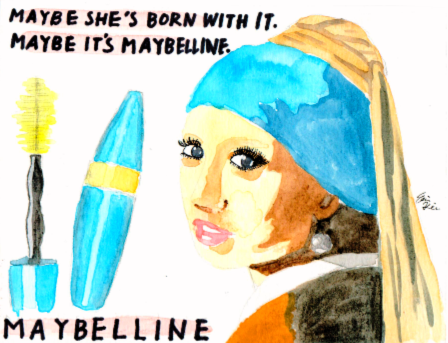Around this time of year we begin to notice a growing number of advertisements in the media, whether they take the form of massive billboards or clever commercials. This increase in advertising and the changing seasons are not a coincidence; statistics show that companies tend to put more effort into their fall advertisements than in any other season. As strange as it may seem, businesses often start composing advertising strategies for Christmas as early as July. This makes sense, considering the commercial holiday season actually stretches from October to December.
Similarly, in the fashion industry, the famed “September issue” is anticipated for months leading up to its release and is discussed for months after. The importance of the issue results from the shift to fall/winter from spring/summer, as many people view autumn as the season to re-invent themselves. Companies use this knowledge to their advantage, making every effort to portray their product as beneficial to these consumer transformations. This can be accomplished through their advertisements, which, if memorable enough, may be the deciding factor in a customer’s choice between two items.
When driving into the city the other day, I paid close attention to each advertisement I passed, taking note of the ones that stood out to me. I found that the most memorable advertisements all had one thing in common: visually intriguing art. I was drawn to advertisements with captivating artistic components, from their color schemes to their graphics. Explosions of color caught my eye, as did interesting compositions and textures. My appreciation of the art itself seemed to transfer onto the product, making the product appear more interesting than it usually would.
Although this fusion between art and advertising may seem modern, in reality it has existed for centuries. Clients began benefiting from the work of artists during the Dark Ages, when the aristocracy and the church hired artists to decorate cathedral and castle walls with impressive portraits of themselves. This early example of brand advertising created the framework for the relationship between clients and artists, in which the clients, hoping to enhance their public image, seek help from the artists, who possess the creative talent to do so.
Hundreds of years later, we live in a time of unprecedented brand sophistication. However, this relationship between art and advertising has hardly changed. A prime example of artists and brands working together in recent years is the 30-year collaboration between Absolut Vodka’s print advertising and big-name artists, including Andy Warhol, Francesco Clemente, Louise Bourgeois, and Keith Haring. Although Absolut has done little besides having artists create static pieces of art to be repurposed as advertising, the standout for culturally aware individuals versus the simplicity of the process is very clever.
Without doubt, the lines between art and advertising are becoming increasingly blurred. While art is already an acclaimed medium of expression, advertising is also a visual means of conveying a message, just a more specific one. While we may be inclined to view art and advertising as opposites, their relationship is far from that, since art is a crucial part of many advertising campaigns today.
Lara Baskin
Arts and Culture Editor
Graphics: Erin Kim

